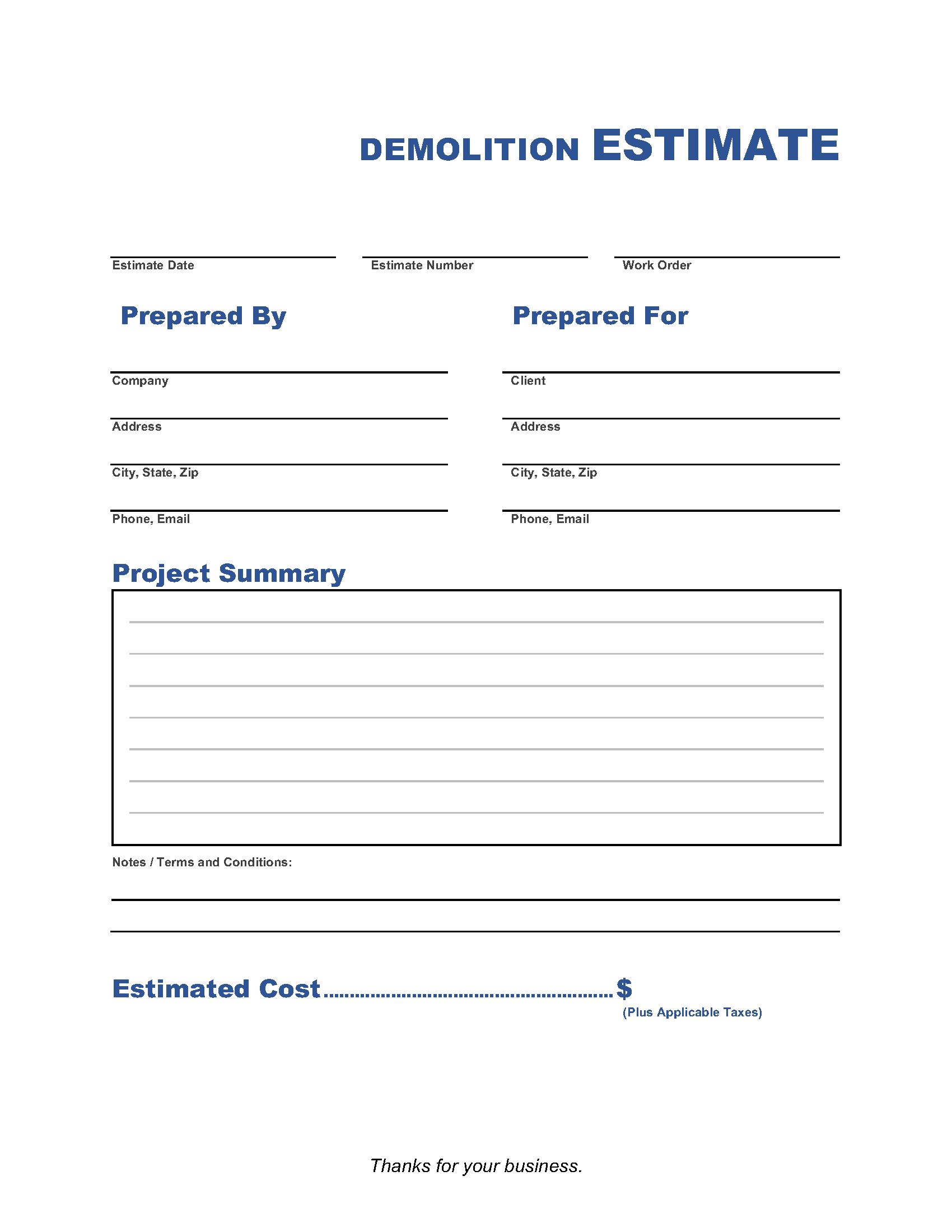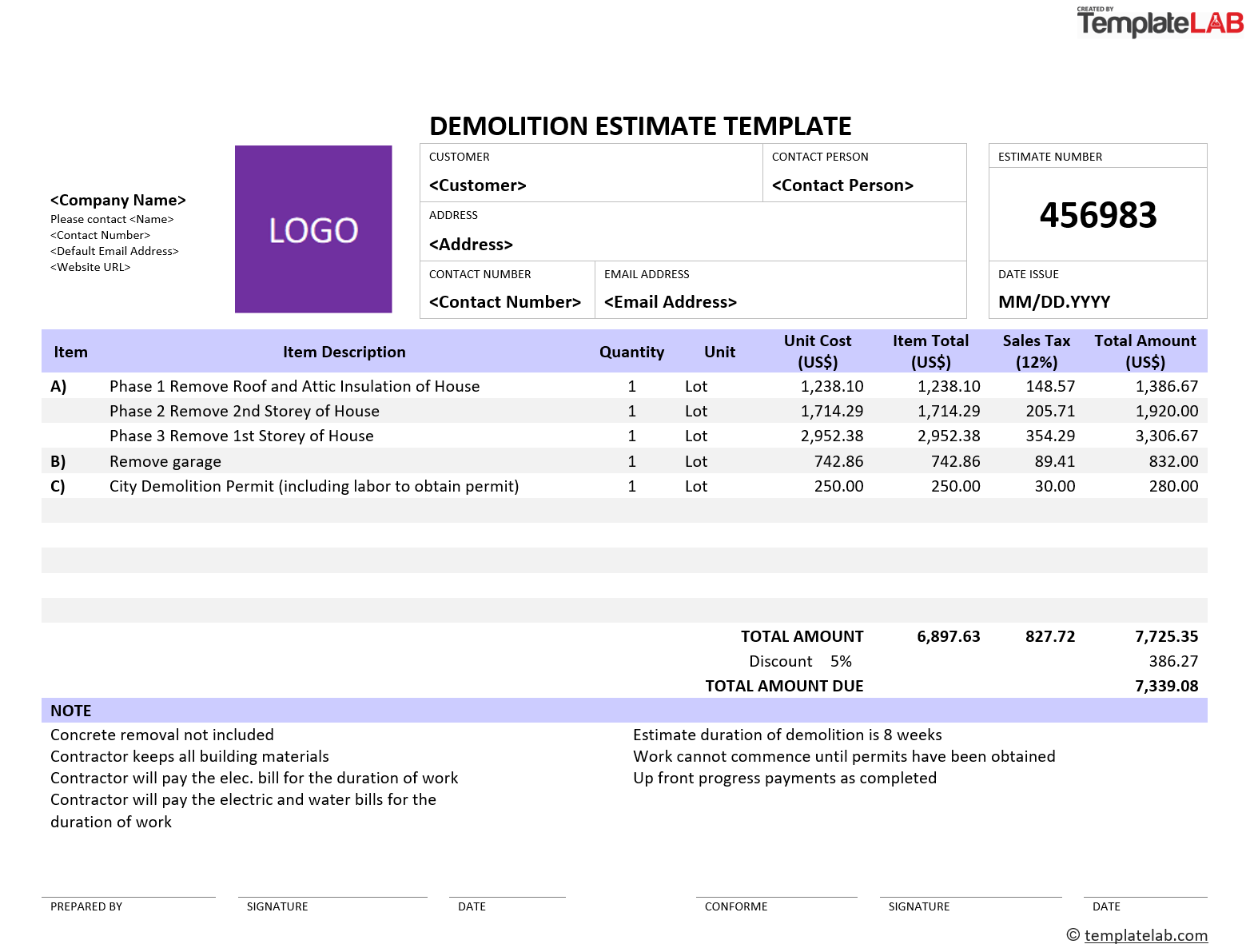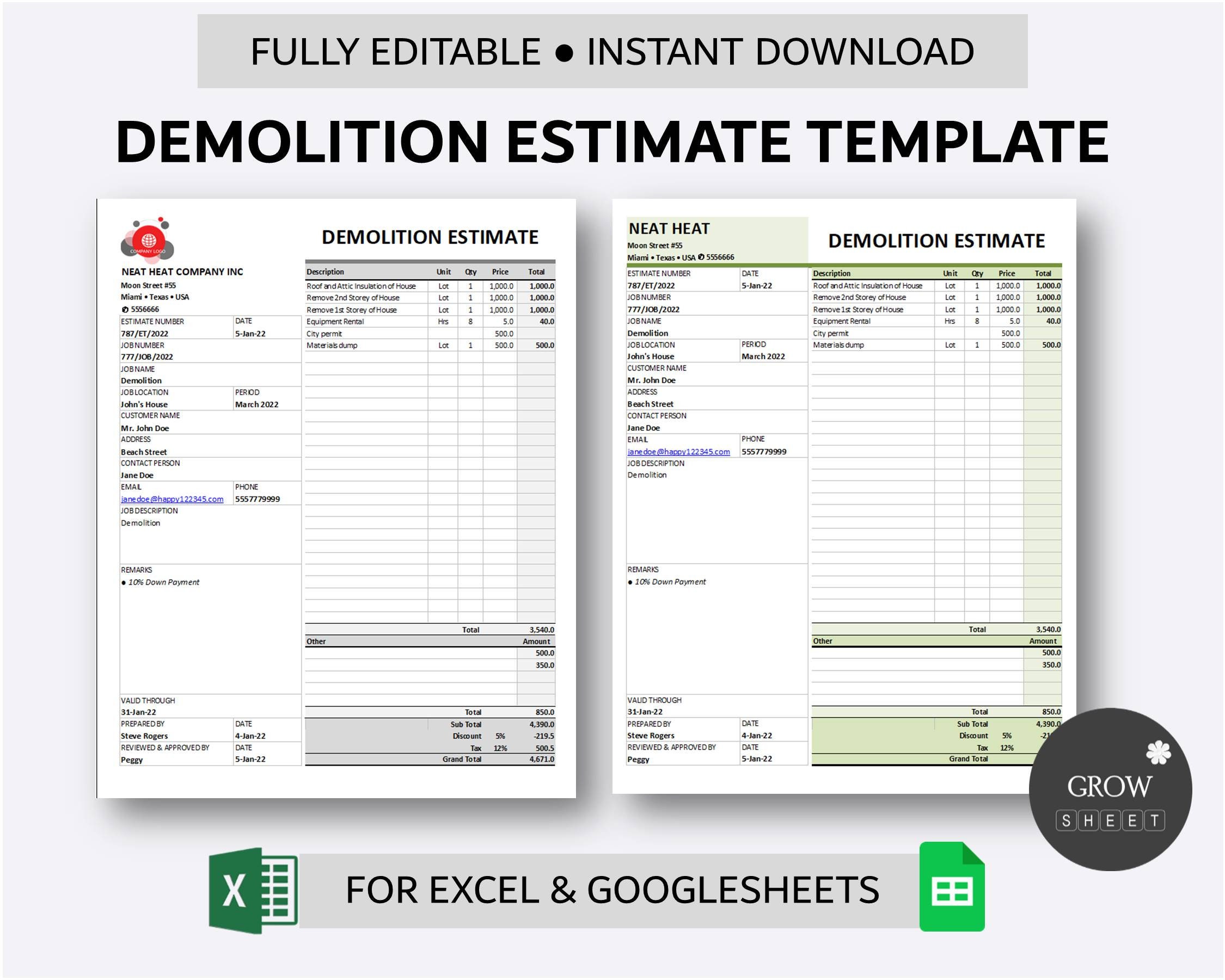When it comes to undertaking a demolition project, one of the most crucial aspects is estimating the cost. Having a clear and accurate demolition estimate is essential for both contractors and clients to ensure that the project is completed within budget and on time.
In this article, we will explore the importance of a demolition estimate template, how to create one, and provide some examples to help you get started.
What is a Demolition Estimate Template?
A demolition estimate template is a document that outlines the projected costs and timelines for a demolition project. It serves as a guide for contractors to estimate the expenses involved in demolishing a structure, including labor, equipment, permits, waste removal, and any additional services required. This template is an essential tool for contractors to present to clients, allowing them to make informed decisions regarding the project.
Why Do You Need a Demolition Estimate Template?
A demolition estimate template is crucial for several reasons:
- Budget Planning: A well-prepared demolition estimate helps clients plan their budget effectively, ensuring they have the necessary funds to complete the project.
- Transparency: A detailed estimate provides transparency to both contractors and clients, allowing them to understand the breakdown of costs and avoid any potential conflicts or disputes.
- Accurate Pricing: With a thorough estimate, contractors can accurately price their services, taking into account all the factors that may impact the overall cost of the demolition project.
- Project Management: An estimate serves as a roadmap for the project, helping contractors manage their resources, schedules, and deliverables effectively.
How to Create a Demolition Estimate Template
Creating a demolition estimate template requires careful consideration of various factors. Here are the key steps to follow:
Step 1: Gather Project Information
Start by gathering all the necessary information about the project, including the type of structure, its size, location, and any specific requirements or constraints. This information will help you accurately estimate the costs and timelines.
Step 2: Breakdown the Project into Phases
Divide the demolition project into different phases, such as site preparation, structural demolition, waste removal, and site cleanup. Breaking down the project allows for a more detailed estimation of costs and helps in project management.
Step 3: Estimate Labor and Equipment Costs
Calculate the labor costs by considering the number of workers required, their hourly rates, and the estimated duration of each phase. Additionally, estimate the equipment costs, including rentals, fuel, and maintenance.
Step 4: Account for Permits and Regulations
Research and include any permit fees or regulatory requirements that need to be fulfilled before initiating the demolition project. This ensures compliance with local laws and avoids any legal complications.
Step 5: Include Waste Removal and Disposal Costs
Estimate the costs associated with waste removal, including the transportation, disposal, and recycling fees. Consider the type and quantity of waste generated during the demolition process.
Step 6: Add Contingency and Miscellaneous Costs
It is essential to include a contingency amount in the estimate to account for unforeseen circumstances or changes in the project scope. Additionally, consider any miscellaneous costs, such as site restoration or temporary fencing.
Step 7: Calculate the Total Estimate
Sum up all the costs from each phase to calculate the total estimate. Present the estimate in a clear and organized manner, including a breakdown of costs under each phase and any assumptions made during the estimation process.
Sample Demolition Estimate Template





Here is an example of a demolition estimate template:
1. Project Information
– Client Name: [Client Name]
– Project Location: [Project Location]
– Structure Type: [Structure Type]
– Size of Structure: [Size of Structure]
2. Phases
– Phase 1: Site Preparation
– Phase 2: Structural Demolition
– Phase 3: Waste Removal
– Phase 4: Site Cleanup
3. Labor and Equipment Costs
– Phase 1: Site Preparation
– Number of Workers: [Number of Workers]
– Hourly Rate: [Hourly Rate]
– Estimated Duration: [Estimated Duration]
– Equipment Rental: [Equipment Rental]
– Phase 2: Structural Demolition
– Number of Workers: [Number of Workers]
– Hourly Rate: [Hourly Rate]
– Estimated Duration: [Estimated Duration]
– Equipment Rental: [Equipment Rental]
4. Permits and Regulations
– Permit Fees: [Permit Fees]
– Regulatory Compliance: [Regulatory Compliance]
5. Waste Removal and Disposal Costs
– Transportation: [Transportation Costs]
– Disposal Fees: [Disposal Fees]
– Recycling Fees: [Recycling Fees]
6. Contingency and Miscellaneous Costs
– Contingency: [Contingency Amount]
– Miscellaneous Costs: [Miscellaneous Costs]
7. Total Estimate
– Phase 1: [Phase 1 Cost]
– Phase 2: [Phase 2 Cost]
– Phase 3: [Phase 3 Cost]
– Phase 4: [Phase 4 Cost]
– Total Estimate: [Total Estimate]
Conclusion
A well-prepared demolition estimate template is essential for any successful demolition project. It helps contractors and clients plan their budgets, ensures transparency, and serves as a roadmap for the project. By following the steps outlined in this guide and utilizing the sample template provided, you can create accurate and comprehensive demolition estimates that will help you achieve your project goals.
Demolition Estimate Template – Download